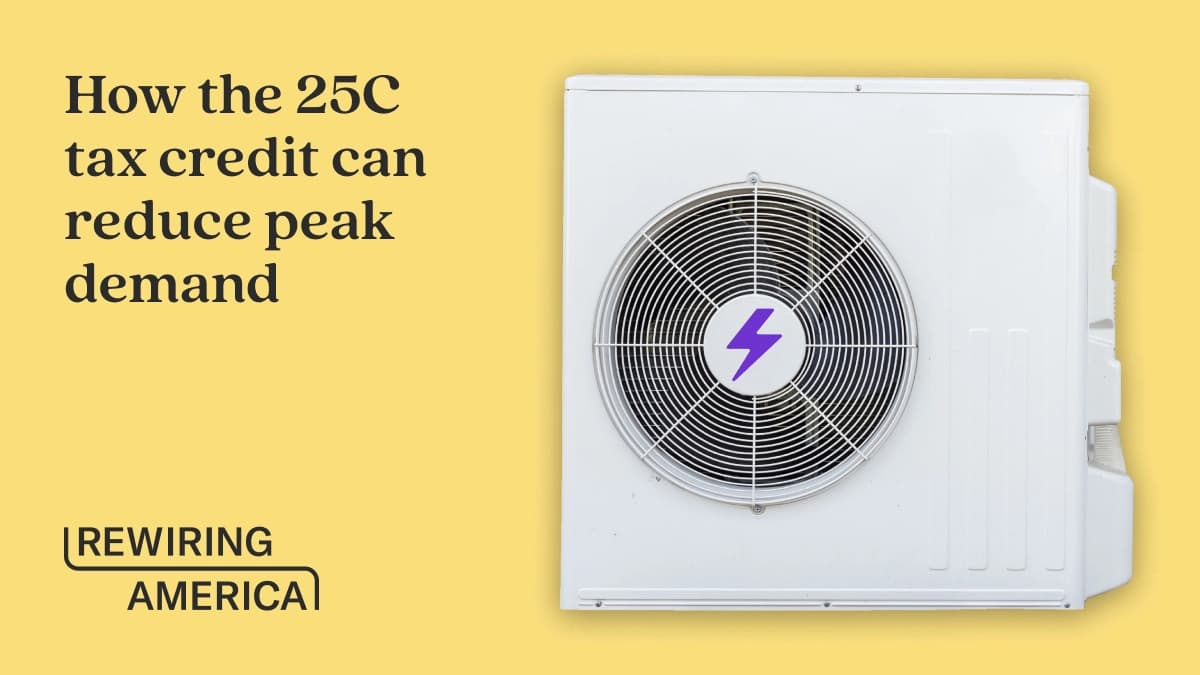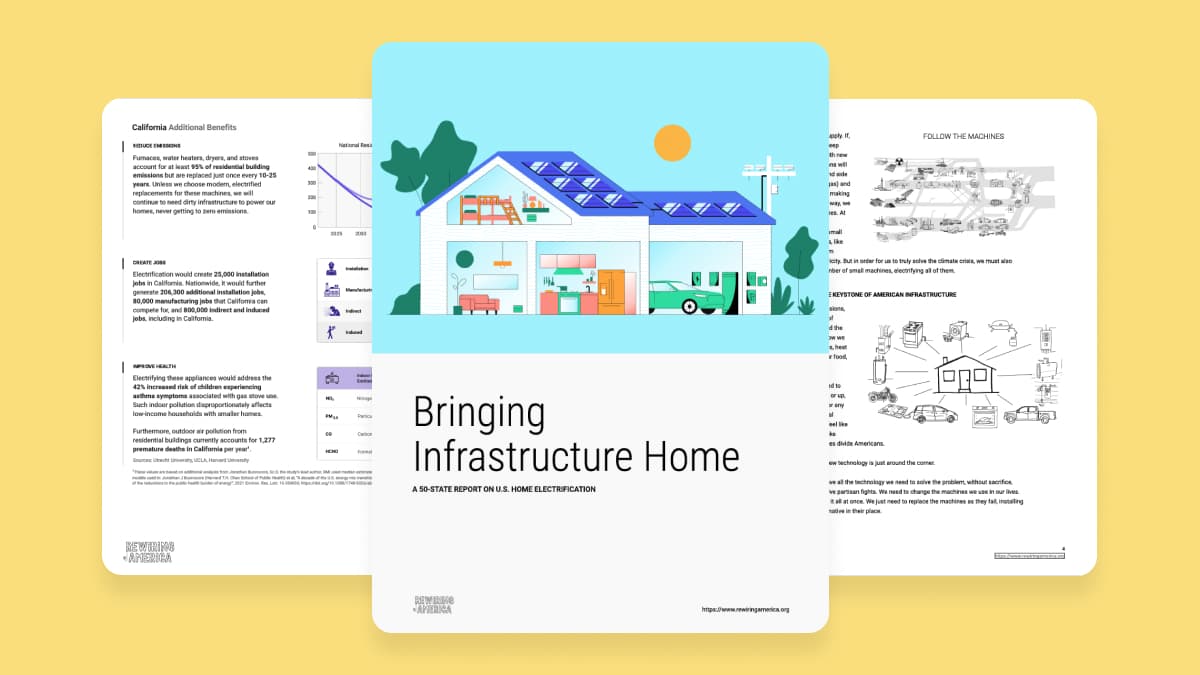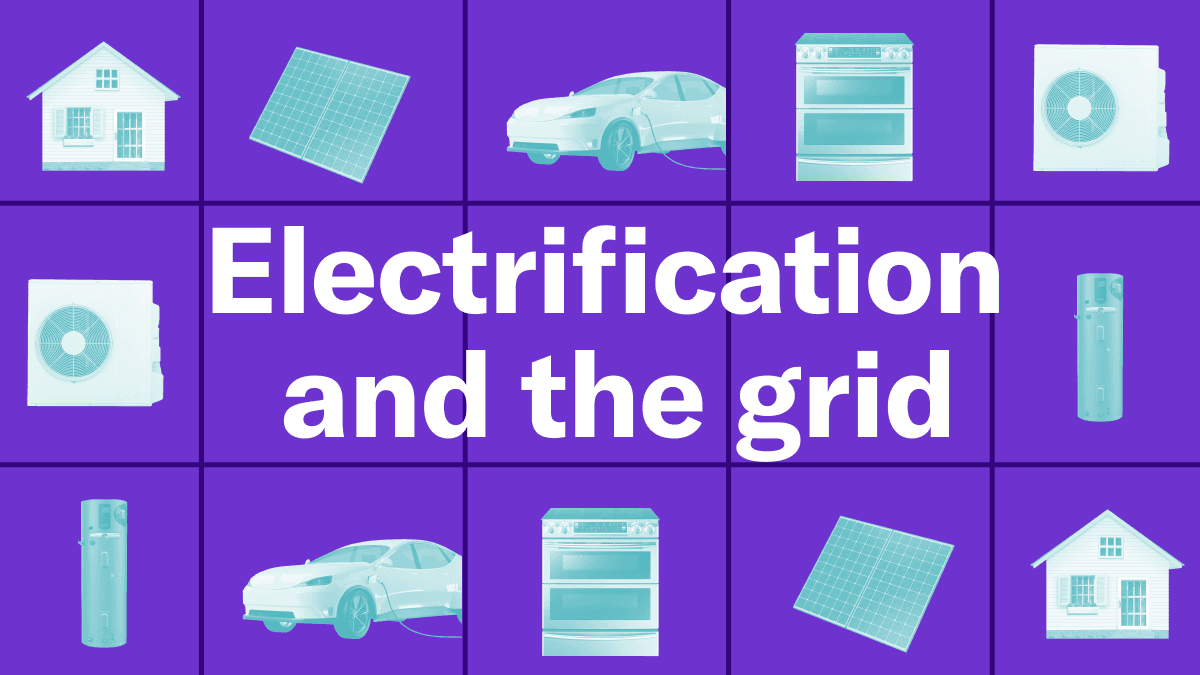Electrification will not break the grid
Smarter tech means we can meet our climate goals.

In partnership with Span.io, we reviewed the data from electrified homes in the U.S. with a SPAN smart panel to better understand the relationship between load management at the house level and grid capacity. What’s a smart panel? Read on!
By now we know that the only viable way to meet our climate goals is to electrify nearly everything, starting with our homes and cars (which create roughly 40 percent of all our carbon emissions). In order to wean ourselves off fossil fuels and power our EVs, heat pumps, induction stoves and smart electric appliances, we will need two to three times as much electricity as we do today. Some of this will come from clean solar energy generated right on our rooftops. But our electrical grid will also need to grow significantly to meet this demand.
Skeptics of electrification say the grid will not be able to grow fast enough to handle this increased demand. History says otherwise: __Between 1950 and 1960, the amount of electricity delivered more than doubled in the U.S. and, by 1970, it more than doubled again when people began using a lot more electric appliances beyond lighting. __
We did it then, and we can do it again – but this time, with smarter technology.
There are significant opportunities hiding right in our basements and utility closets, embodied in the humble electrical panel. As homes electrify, many will need more electricity than the panel was originally designed for. Like other grid infrastructure, panels are sized for peak electricity load: the amount of electricity required if nearly everything in your home is used at the same time. But this peak load is 10-20 times higher than the average load over time. So if we can better manage peak events, much more electricity can be delivered without increasing panel capacity. This is important, because increasing panel capacity in the home can result in a corresponding upgrade of the service to the home, which can be time-consuming and expensive. Fortunately, we now have “smart panels” designed to manage those peaks.
Approximately 50-60 million single-family homes (60-70 percent) have electrical panels with ratings less than 200 amps. If these households fully electrify (two electric vehicle chargers, heat pump HVAC, heat pump water heater, electric stove and electric dryer), most will need a larger electrical panel. Buying a smart panel may be more expensive than a conventional electrical panel, but it’s significantly cheaper than a service upgrade. This is especially true for households that get their electrical service through underground wires, where the avoided costs of an electrical upgrade will likely pay for the smart panel many times over. Beyond cost, the long timelines of service upgrades can be a deterrent for consumers considering electrification.
For almost every single-family home in the U.S., smart electrical panels can eliminate one of the major barriers to whole-home electrification: the cost and complexity of utility service upgrades. The important thing is to make sure that those panels are in place before we replace our fossil-fueled appliances; we don’t want to be stuck buying another gas water heater when it breaks, because emitting carbon from an appliance for another decade is, well, not “smart.”
So what does all of this mean? Panels in our homes are incredibly important to electrifying everything. If we do it the right way, we can upgrade the panels of households across the country, making our grid more efficient and resilient by treating the panel itself as a critical part of our grid infrastructure.
This is an investment we can make right now, and policymakers must help with incentives to homeowners to reduce the costs of these upgrades, especially for low- and moderate-income households. Smart grid technologies can improve the reliability and resiliency of the grid, while allowing us to scale our infrastructure more efficiently and cost-effectively.
Our Smartest Takeaways:
Approximately 60-70 percent of American households have electrical panels (and service wires) that allow fewer than 200 amps of electricity to flow in from the grid. Many of these homes may need service upgrades unless the problem is solved at the panel.
Household peak loads are 10-20x higher than average loads—smart panels can shave these peaks and let us get more electricity from the same infrastructure.
We don’t need to design for peak loads. We do need to get ready to rewire.
Want to go deeper? Read our full Circuit Breaker white paper on grid resilience!



